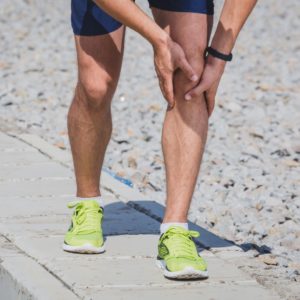
At Cynergy, our physical therapists can help calm the pain, often by stretching the surrounding muscles.
What Is the Iliotibial Band?
The iliotibial band is a think bunch of fibers that runs from the outside of your hips down the outer thigh and knee, ending at the top of the shinbone. The IT band helps your hip move around. It also plays a role in knee stabilization.
What Is Iliotibial Band Syndrome?
If your iliotibial band gets too tight, this can lead to pain on the outer knee and down onto the upper shinbone. The IT band becomes inflamed with the continual bending of the knee or the repeated twisting around a straight leg, such as in a golf swing.
What Are the Symptoms of IT Band Syndrome?
The main symptom is pain on the outer knee. When you’re early in the progression, the pain may go away when you warm up and start moving. But over time, the pain will likely get worse.
Other symptoms:
- Aching on the outer knee
- The sensation of burning or tenderness on the outer knee
- Aching, burning, or tenderness on the outside of the knee
- Pain up and down your leg, not usually going all the way to the foot
- Feeling a click, pop, or snap on the outside of your leg
- Feeling of weakness when you first stand up from sitting or lying down
What Causes IT Band Syndrome?
When the IT band crosses over your knee, bursae normally provide the cushioning to allow it to glide smoothly back and forth as you bend and then extend your leg. If this tendon is too tight, however, a bending knee will lead to friction, which causes both the IT band and the corresponding bursae to swell. This is where the pain comes from.
Treatment
At Cynergy, our physical therapists give IT band syndrome patients stretching exercises for the muscles surrounding the band, such as the glutes, hamstrings, hip rotators, and quads. A foam roller used at a perpendicular angle to the leg can help to decrease any adhesions that are impeding smooth movement. We also strengthen the surrounding musculature.
For help with IT band pain, make an appointment at Midtown West, (212) 974-7252; Chelsea, (212) 255-8080; Midtown East, (212) 980-2963; ADPT by Cynergy, (212) 292-7145; or Cobble Hill, (718) 795-2744.
